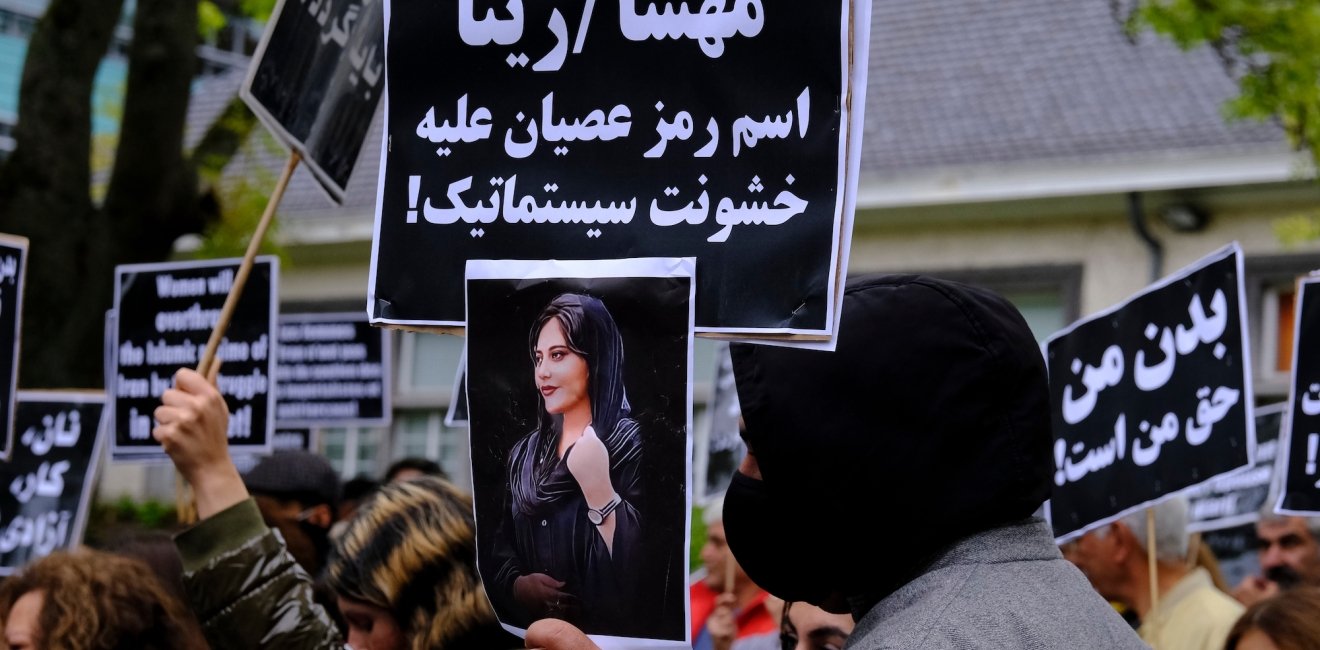On the 1st of February 1979, exactly 44 years ago today, Ayatollah Ruhollah Khomeini, the leader of Iran’s revolution, returned from his 14-year exile in Iraq and Paris to be received by a euphoric population. For nearly a year leading up to his return, strikes and demonstrations had swept Iran’s towns and cities; what began as a protest against economic and political conditions grew, under Khomeini’s leadership from abroad, into a demand for the overthrow of the monarchy and its replacement by an Islamic government. Their slogan was, “Independence, Liberty, Islamic Republic.” Now, on this crisp February morning, millions poured into the streets to welcome Khomeini home, anticipating a new dawn and a new era of freedom, prosperity, and justice for all. Khomeini himself, it was thought, would retire to the shrine city of Qom, leave actual governing to others, and serve as the spiritual leader and religious guide of the country.
One of Iran’s leading intellectuals described Khomeini as the 'Gandhi of Iran.'
Before this long-awaited moment, expectations were high everywhere. When asked, a bookstore owner told me he thought the revolution would bring, “democracy.” One of Iran’s leading intellectuals described Khomeini as the “Gandhi of Iran.” A friend, dismissing concerns about the consequences of regime upheaval, remarked, “Once the Shah is gone, everything else will fall into place.” Middle and upper-class women, who never observed anything resembling the hijab, in a gesture of respect to the revolution Khomeini was leading in the name of Islam, donned scarves to join the massive marches taking place in cities and towns across the country. Warnings and notes of caution went unheeded. I remember the mother of a friend, a woman in her seventies, telling her daughter: “Do you know how hard women of my generation worked to end the hijab and now you people are going back to it voluntarily?” But her daughter and many other women friends who had joined the revolution believed this was merely a temporary accommodation: “Things will go back to normal, and we will finally have the democracy we desire.”
The regime shows no mercy
In fact, things did not turn out as expected. The revolution consolidated the power of the clergy, the radicals and the violent. Almost immediately, the revolutionary terror began: there were purges, arrests, trials, and grisly executions. On street corners, young vigilantes in fatigues and armed with sub-machine guns stopped cars and demanded to see IDs. Revolutionary committees sprang up all over the country, arresting people and hauling them before self-appointed revolutionary courts and the unmerciful judgements of self-appointed judges.
For women, too, the hammer came quickly in the form of the mandatory hijab and much more. Banks, government offices, schools, and shopkeepers reminded women that times had changed; they had better observe the hijab and the new dress code. This dress code included a baggy, long coat coming down to the ankles, referred to as the “manteau”, a scarf completely covering the hair or a black hood, the maghna’e, that covered the head and fell down on the shoulders, and—always—clothing in dark colors. Bright colors were considered frivolous and immodest.
Women were soon purged from decision-making positions in government departments, and women and men were segregated in public places...
Women were soon purged from decision-making positions in government departments, and women and men were segregated in public places, government offices, and university classes. Male teachers could no longer teach in girl schools, and women were barred from certain fields of study at universities.
The long road back
Within a month, on March 8, 1979, on the occasion of International Women’s Day, thousands of women in the city of Tehran marched to the prime minister’s office to protest the imposition of the hijab. It did them little good. The protest was attacked by vigilantes, and the government refused to back off, nor, in an atmosphere of renewed Islamic fervor, did the population in general support the women. The hijab was enforced with a vengeance. And a pattern was set from the first months of the revolution that was to be repeated in subsequent years: any serious protest, opposition, or dissent would be silenced by force—brutal force if necessary.
[Women] found themselves responsible for holding the family unit together, struggling to obtain scarce food rations, and desperately looking for jobs to survive.
The Iran-Iraq War that broke out in 1980 and stretched out for eight years imposed an additional hardship on women. As men in large numbers went to the front and joined the fighting, women became the family breadwinners. They found themselves responsible for holding the family unit together, struggling to obtain scarce food rations, and desperately looking for jobs to survive.
For women, the post-war years were not an easy time either. As the situation normalized a bit, women started taking matters into their own hands. They pushed for equal access to education at every level, they forced their way into formal employment, and they pushed for changes in the personal status laws. Once the mourning for the war–dead was over, women dared once again to wear colorful clothing and to claim a voice in the political and economic affairs of the country. None of this was easy. It has meant a 44-year struggle for women to regain their lost rights, and to end government interference in their daily lives and the imposition of what to wear and how to live and behave.
An explosion was bound to occur, and it came in September of last year when the young Kurdish woman, Mahsa Amini, was killed in hands of the morality police. Her brutal death triggered an uprising by young women, who were soon joined by young men. What we witnessed in Iran over the last few months was the uprising of Iran’s GEN-Z. Their protests have been a striking rejection of the regime of the clerics. 44 years after the euphoric reception of Ayatollah Khomeini and the high expectations that accompanied the establishment of his government. Their slogan, ringing out from the windows of homes and apartment buildings in the dark of night has been, “Death to the Islamic Republic.”
The views expressed in these articles are those of the author and do not reflect an official position of the Wilson Center.









